#book summaries
Text
Discussion summary: Left Hand of Darkness
Published in 1969, The Left Hand of Darkness is a classic in science fiction that explores issues of sex/gender in an alien-yet-human society where the aliens are just like us except in how they reproduce. These aliens, the Gethenians, can reproduce as either male or female. They spend most of their lives sexually undifferentiated. Once a month, they go into heat (“kemmer”) and their sexual organs activate as either male or female (it’s essentially random).
Here's a summary of the discussions we had on 2023-08-25 and 2023-09-01 about the book:
HIGH LEVEL REACTONS
Michelle (@scifimagpie): even though it was written by a cis straight perisex woman there is a queerness to the writing that feels true and that she nailed. There is a queerness to the soul of this book that still holds up, that's true and good, and I cannot but love and respect that.
Elizabeth (@ipso-faculty): this book is such a commentary on 1960s misogyny. Genly is a raging misogynist. It takes a whole prison break and crossing the arctic for Genly to realize a woman or androgyne can be competent 👀
Dimitri: [Having read just the first half of the book] I wonder if it keeps happening, if Genly keeps going "woaaaah" [to the Gethenians’ androgyny] or if he ever acclimates. It's been half the novel my guy
vic: yeah a book where a guy is destroyed by seeing a breast makes me want queer theory
vic: [it also] makes me feel good to see how much has changed [since the 1960s]
THE INTERSEX STUFF
A thing we appreciated about the book was how being intersex is contextual. The main character of the book, Genly Ai, is a human from a planet like Earth, who visits Gethen to open trade and diplomatic relations.
On his home planet, and to Earth sensibilities, Genly is perisex - he is able to reproduce at any time of the month and is consistently male.
But on Gethen, Genly becomes intersex. On Gethen, the norm is that you only manifest (and can reproduce as) a given sex during the monthly kemmer (heat/oestrus) period.
The Gethenians understand Genly as living in “permanent kemmer”, which is described as a common (intersex) condition, and these people are hyper-sexualized and referred to as Perverts.
At this point it’s worth noting that depiction is not the same as endorsement. Michelle pointed out the book is very empathetic to those in permanent kemmer. LeGuin does not appear to be endorsing the social stigma faced by these people, merely depicting it, and putting a mirror to how our own society treats intersex people.
Throughout the book, Genly is treated as an oddity by the Gethenians. He is hyper sexualized. He undergoes a genital inspection to prove he is who he says he is.
When Genly is sent to a prison camp and forcibly given HRT, he does not respond “normally” to the hormones, the effects are way worse for him, and the prison camp staff don’t care, and keep administering them even if it’ll kill him.
Two of us have had the experience of having hyperandrogenism and being forced onto birth control as teenager, and relating to the sluggishness of the drugs that Genly experienced, as well as the sense that gender/sex conformity was more important to authority figures (parents, doctors) than actual health and well-being.
Another scene we discussed the one where Genly is in a prison van en route to the gulag, and a Gethenian enters kemmer and wants to mate with him and he declines. He is given multiple opportunities over the course of the book to try having sex with a Gethenian, and declines every time, and we wondered if he avoided it out of trauma of being hyper-sexualized & hyper-medicalized & having had his genitals inspected.
We discussed the way he described his genital inspection through a trauma lens, and how it interacts with toxic masculinity - in vic’s terms, Genly being "I am a manly man and I have don't trauma"
Those of us who read the short story, Coming of Age in Karhide, noted that once the world was narrated from a Gethenian POV, the people in permanent kemmer were treated far more neutrally, which gave us the impression that Genly as an unreliable narrator was injecting some intersexism along with his misogyny
WHY IT MATTERS TO READ THIS BOOK THROUGH AN INTERSEX LENS
Elizabeth: I’ve encountered critiques of this book from perisex trans folks because to them the book is committing biological essentialism, and dismissing the book as a result. I think they’re missing that this book is as much about (inter)sex as it is about gender. I think they’re too quick to dismiss the book as being outdated or having backwards ideas because they’re not appreciating the intersex themes.
Elizabeth: The intersex themes aren’t exactly subtle, so it kind of stings that I haven’t seen any intersex analyses of this book, but there are dozens (hundreds?) of perisex trans analyses that all miss the huge intersex elephants in the room.
Also Elizabeth: I’ve seen this book show up in lists of intersex books/characters made by perisex people, and I’ve seen Estraven listed as intersex character, and it gets me upset because Estraven isn’t intersex! Estraven is perisex in the society in which he lives. Genly is the intersex character in this story and people who misunderstand intersex as being able to reproduce as male & female (or having quirky genitals smh) are completely missing that being intersex is socially constructed and based on what is considered typical for a given species.
WHAT THE BOOK DOESN’T HANDLE WELL
The body descriptions. As Dmitri put it: “ Like "his butt jiggled and it reminded me of women" ew. It was intentional but I had to put the book down. It reminded me of transvestigators and how they take pictures of people in public.” 🤮
Not pushing Genly to reflect on how weird he is about other people’s bodies. We all had issues with how Genly is constantly scrutinizing the bodies of other humans to assess their gender(s) and it’s pretty gross.
vic asked: “how much of this is her reproducing violence without her knowing it? A thing I didn't like was how he always judging and analyzing people's bodies and realizing others treat him that way. And I wish there was more of his discomfort about this, that it made him feel icky.”
Dimitri added: “I really wanted him to have a moment of this too, for him to realize how much it sucks to be treated this way. As a trans person it's so uncomfortable. What are you doing going around doing this to people?”
Using male pronouns as default/ungendered pronouns. Élaina asked why Genly thinks a male pronoun is more appropriate for a transcendent God and pointed out there’s a lot to unpack there.
OTHER POSITIVES ABOUT THE BOOK
Genly’s journey towards respecting women, that he still had a ways to go by the end of the book. vic pointed out how “LeGuin was straight, and she loves men, and is kinda giving them the side-eye [in this book]. Her writing about how Genly is childish makes me really happy. It’s kind of hilarious to watch him bang his head against the wall because he’s so rigid.”
To which Dmitri added: “I agree with the bit on forgiving men for stuff. I don't know how she [LeGuin] does it but she really lays it all out. She gives you a platter of how men are bad at things, how they make mistakes that are pretty specific to them. She has prepared a buffet of it.”
Autistic Estraven! As Michelle put it: “autistic queer feels about Estraven speaking literally and plainly and Genly not getting it”
The truck chapter. Hits like a pile of bricks. We talked about it as a metaphor for the current pandemic.
The Genly x Estraven slowburn queerplatonic relationship
The conlang! Less is more in how it gets used
MIXED REACTIONS
The Foretelling. For some it felt unnecessary and a bit fetishy. For others it was fun paranormal times.
Pacing. Some liked how the book really forces you to really contemplate as you go. Others struggled with a pace that feels very slow to 2023 readers.
WORKS WE COMPARED THE BOOK TO
Star Trek (the original series) - we wondered if LHOD and Genly Ai were progressive by 1960s standards, and TOS came up as a comparison point. We were all of the impression that TOS was progressive for its time but all of us find it pretty misogynist by our standards. The interest in extra-sensory perception (ESP) is something that was a staple of TOS that feels very strange to contemporary viewers and also cropped up in LHOD
Ancillary Justice - for being a book where characters’ genders are all ambiguous but the POV character is actually normal about how they describe other characters’ bodies.
The Deep - for being another book in a situation where being able to reproduce as male and female is the norm. The Deep was written by an actually intersex author, and doesn’t have the cisperisex gaze of scrutinizing every body for sex. But oddly LHOD actually winds up feeling more like a book about intersex people, because it features a character who is the odd one out in a gonosynic society. In contrast, nobody is intersex in the Deep - everybody matches the norms for their species, which makes the intersex themes in the work much more subtle.
Overall, as vic put it, “there's something to be said about an honest depiction that's not great, especially when there's no alternatives”. For a long time there weren’t many other games in town when it came to this sort of book, and even though some things now feel dated, it’s still a valuable read. We’d love to see more intersex reviews & analyses of the book!
#intersex book club#book summaries#book reviews#left hand of darkness#the left hand of darkness#ursula k. le guin#intersex books#intersex literature#queer books#queer literature#queer fiction#queer scifi#intersex
151 notes
·
View notes
Text
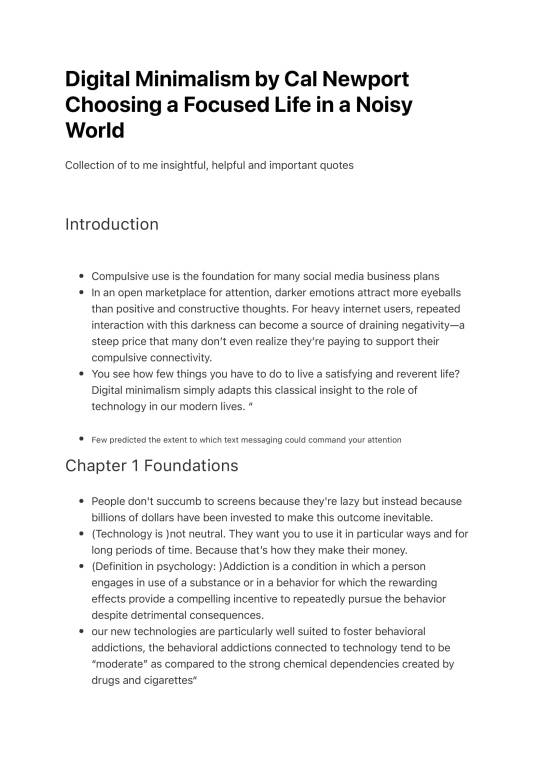

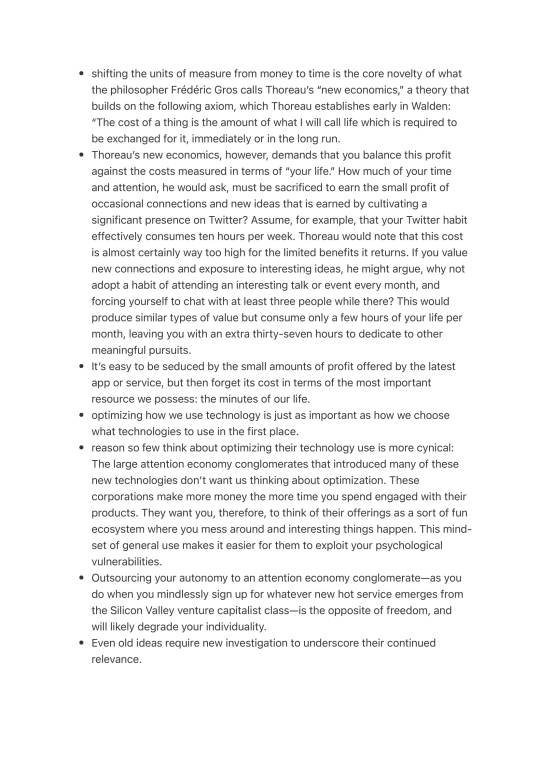
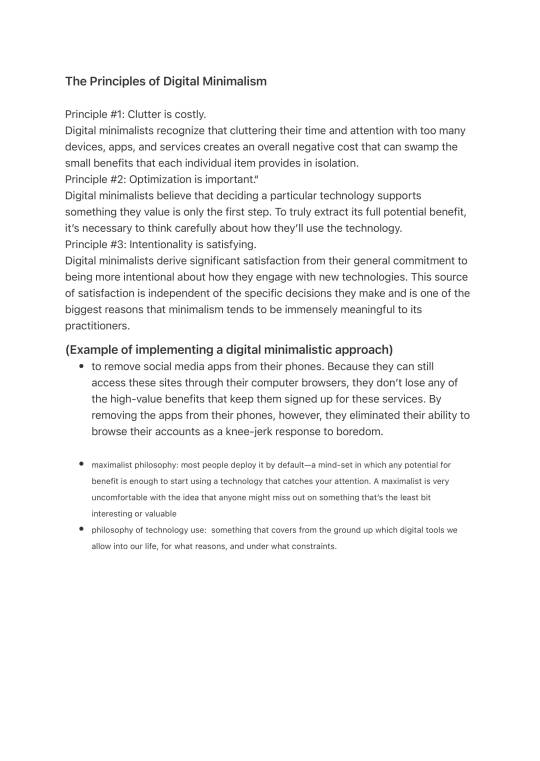

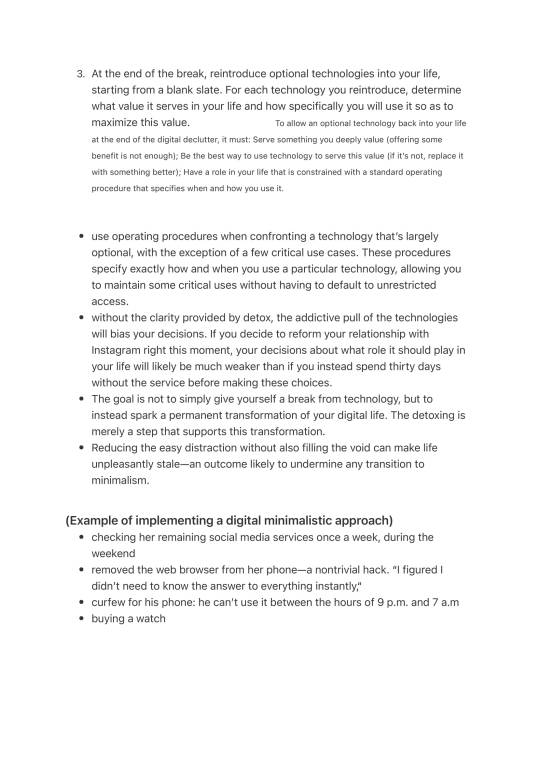
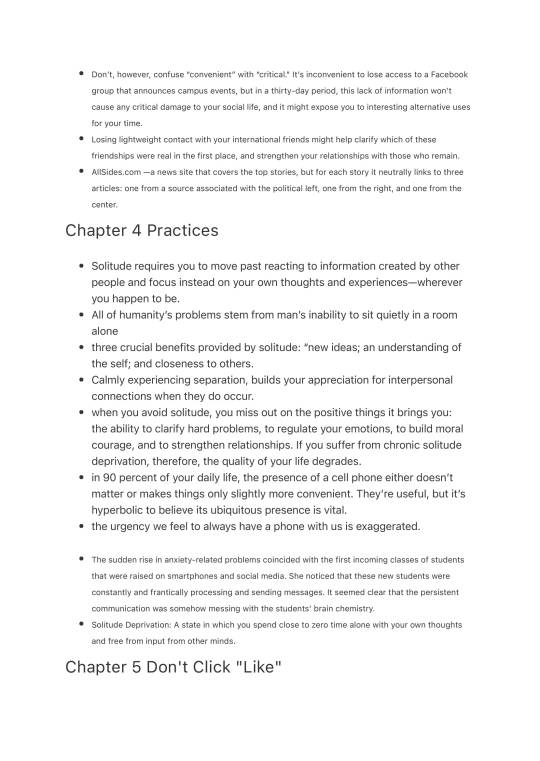


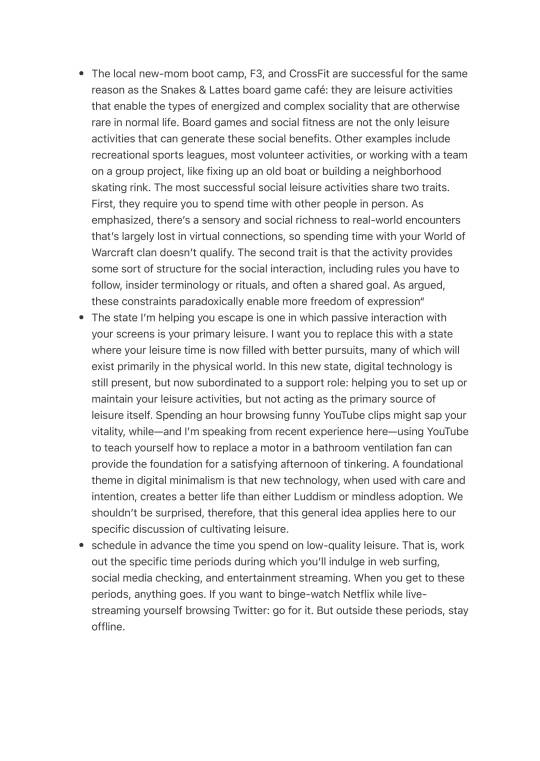


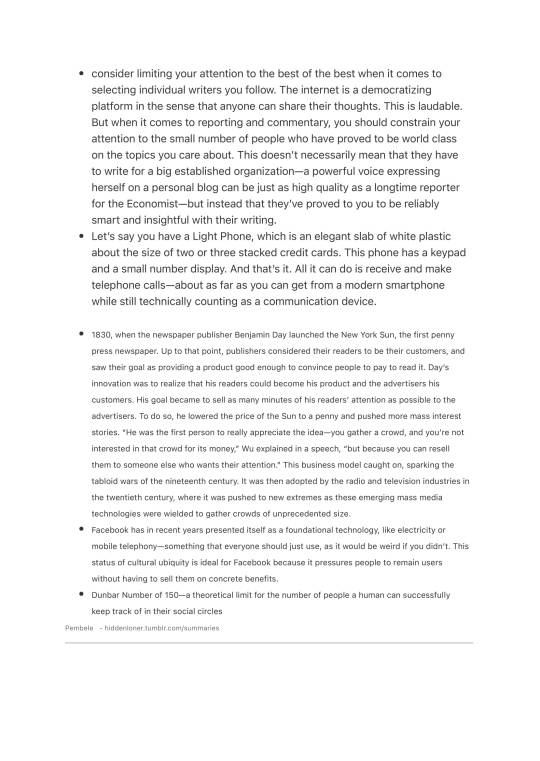
#high maintenance#black luxury#glow up#that girl#self improvement#higherself#black women appreciation#levelup#summaries#summary#book summary#book summaries#cal newport#deep work#digital minimalism#P
251 notes
·
View notes
Photo

#austen#jane austen#sense and sensibility#abridged#abridged classics#books#reading#literature#book summaries#wrong hands#john atkinson#webcomic
120 notes
·
View notes
Text


"There are few words that are harder to explain than 'loyalty'. It's always regarded as a positive characteristic, because a lot of people would say that many of the best things people do for each other occur precisely because of loyalty. The only problem is that many of the worst things we do to each other occur because of the same thing."
Bang. Bang. Bang. Bang.
Have you ever read a book that stayed with you day in and day out? The characters and plot just keep popping into your head, even during the most mundane daily activities. Do you feel every emotion with those characters and find pieces of yourself in them? Do you see yourself reflected in their flaws and mistakes? For me, that book is Beartown.
The beginning is slow-paced, with the author taking time to introduce us to this snow-covered small town in Sweden and the cast of more than ten characters, each with their own flaws, hopes, dreams, ambitions, fears, internal struggles, and complexities. You slowly become a part of this community, living with these people. The intertwined lives of these characters and their ultimate obsession with hockey give way to the tragedies that strike the town and consume them entirely. This book explores the themes of loyalty, love, morality, and tragedy.
Backman masterfully portrays these characters, revealing their most raw, vulnerable, and dark phases of humanity. Throughout the book, Backman conveys the message that sports can bring people together, but it can also be the cause of destruction, as you see in Beartown.
JUST READ IT!!!! (you won't regret it)
#beartown#dark academia vibes#spilled ink#quotes#spilled words#booknerd#book author#bookaholic#books & libraries#bookstagram#book summaries#book suggestions#dark acadamia aesthetic#classic aesthetic#books#book review#bookish
7 notes
·
View notes
Text

The One Thing: The Surprisingly Simple Truth Behind Extraordinary Results (Authors: Gary Keller, With Jay Papasan)

Small Talk 1: If you don’t think BIG you put a cap on what you can achieve
Prioritize your to-do list. All items are not equally important. The Pareto principle states- 80% of the defects comes from 20% of the flaws.
Ask FOCUS questions
The secret to getting ahead is to getting started.
The secret to getting started is knowing what to do and focus on
What’s the ONE thing you can do such that by doing it everything else becomes easy or unnecessary.
Find the direction and choose the action.
Small Talk 2: The secret to a disciplined life is sequential habit forming.
Use discipline selectively to form enduring good habits.
Channel all of your discipline into ONE habit that will anchor you.
Once you establish one habit, move onto another.
Build positive habits by selectively applying discipline.
Small Talk 3: Multi-talking is inefficient. Pick ONE thing.
Humans can’t focus on two things at once
Task switching enacts a time penalty. Every time you stop, you have to remember where you were and what you were doing.
Small Talk 4: Your will-power is like a fuel tank. Choose carefully where you use it.
Willpower drains throughout the day, depending on what activities you engage in.
When you focus attention, suppress emotion- depletes your emotion.
For examples- did you know research shows judges much more likely to give "no parole "to offenders at the end of a long work day at court? With energy is depleted- people are more likely to follow the path of least resistance.
Small Talk 5: Saying No to unimportant tasks is vital to focus on important one
Say NO to low priority requests.
Take a page from Apple's book- they went from 350 products to just 10.
Focusing is about saying NO.
Put in systems to cut down on the requests you get.
Small Talk 6: Living with purpose and visualizing goals sets you on the path to success.
Must have concrete goals to work towards to be able to know what you’re doing, why, directing your actions
Visualize each step.
What’s the ONE thing you want to do and achieve in life
Small Talk 7: Never compromise your personal life for professional goals, prioritize your work-time ruthlessly
Work is made of rubber- the others are make up glass.
Prioritize work time to focus on professional goals.
Small Talk 8- To focus on ONE thing you need time management strategies. And to embrace some chaos.
Chaos always builds but keep focus on your ONE thing.
Schedule blocks of time to work on your ONE thing and ruthlessly defend those blocks.
#the one thing#personal development#productivity#self help#self improvement#self care#psychology#book blog#book summaries#entale#small talk#small talk summary
3 notes
·
View notes
Text
30 DAYS WRITING CHALLENGE.
Day 19:Write a summary for a book you would love to read.
From:@creativepromptsforwriting.
Book:Amulet by Kazu Kibuishi.
After the tragic death of their father, Emily and Navin move with their mother to the home of her deceased great-grandmother, but this house proves to be dangerous. Before long, a sinister creature lures the kids' mom through a door in the basement. Emily and Navin, desperate not to lose her, follow her into an underground world inhabited by strange creatures, robots, and talking animals. Eventually, they enlist the help of a small mechanical rabbit named Miskit. Together with Miskit, they face the most terrifying monster of all, and Emily finally has the chance to save someone she loves.
3 notes
·
View notes
Text
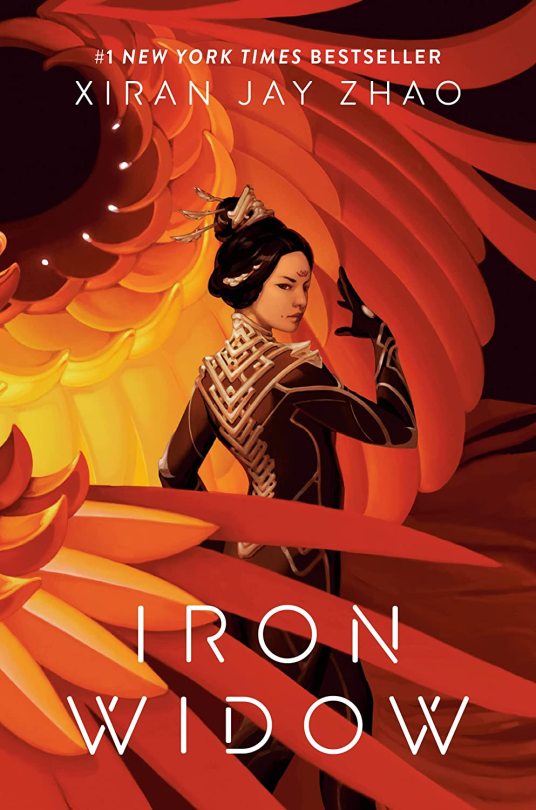
An instant #1 New York Times bestseller!
Pacific Rim meets The Handmaid's Tale in this blend of Chinese history and mecha science fiction for YA readers.
“Like its ferocious heroine, Iron Widow is brutal, bloodthirsty, and full of rage. Zetian's fight to shatter patriarchal definitions of power makes for a truly thrilling read.”
—Julie C. Dao, author of Forest of a Thousand Lanterns
“A primal scream of a book, Iron Widow delivers on all that fury and more, combining meticulous pacing and brilliant world building to make a truly epic read.”
—E.K. Johnston, #1 New York Times bestselling author of Aetherbound
“Zetian is the take-no-prisoners heroine you’ll love to cheer on as she crushes everyone who tries to bring her down.”
—Rebecca Schaeffer, author of Not Even Bones
“A bold and brash story that will grab you by the throat from page one. Zhao expertly weaves a story that polishes off classic sci-fi themes and re-imagines them in a lush futuristic world inspired by Ancient China. With an unapologetic heroine who pushes so far beyond the boundaries of expectations, the reader will go on a journey of twists and turns that will make them gasp with each page turn. Thrilling, heart-wrenching, and epic!”
—Kat Cho, internationally bestselling author of Vicious Spirits
“In Iron Widow, Zhao crafts a thrilling, brutal tale with jaw-dropping action and a fierce and unyielding heroine. Zetian is unstoppable, and I dare you not to cheer her on.”
—Elizabeth Lim, bestselling author of Spin the Dawn
“Iron Widow is a gut punch from the very first pages. The action is riveting. The story relentless. The heroine ruthless and unapologetic. Zetian is here to set the world on fire, and her pursuit of vengeance is thrilling and empowering to behold. Sit back and enjoy the show — and stay the hell out of her way.”
—Nicki Pau Preto, author of Crown of Feathers
“A searing, cinematic, gut-punch of a tale, Iron Widow is both wickedly fun and brutally incisive when it comes to the Chinese history and culture it draws inspiration from. There’s no resisting Wu Zetian; once she sinks her claws in you, you’ll be racing alongside her to a shocking, subversive end.”
—Joan He, New York Times–bestselling author of The Ones We're Meant to Find
“Absolutely epic. This is the historical-inspired, futuristic sci-fi mash-up of my wildest dreams. Iron Widow charges headfirst into a world of giant mechas and uncompromising characters. The brutal beauty of Xiran Jay Zhao’s writing kept me glued to the page from start to finish.”
—Chloe Gong, New York Times–bestselling author of These Violent Delights
“I . . . stayed up till 3 a.m. to finish.”
—Lisa Gardner, New York Times-bestselling author
The boys of Huaxia dream of pairing up with girls to pilot Chrysalises, giant transforming robots that can battle the mecha aliens that lurk beyond the Great Wall. It doesn't matter that the girls often die from the mental strain.
When 18-year-old Zetian offers herself up as a concubine-pilot, it's to assassinate the ace male pilot responsible for her sister's death. But she gets her vengeance in a way nobody expected—she kills him through the psychic link between pilots and emerges from the cockpit unscathed. She is labeled an Iron Widow, a much-feared and much-silenced kind of female pilot who can sacrifice boys to power up Chrysalises instead.
To tame her unnerving yet invaluable mental strength, she is paired up with Li Shimin, the strongest and most controversial male pilot in Huaxia. But now that Zetian has had a taste of power, she will not cower so easily. She will miss no opportunity to leverage their combined might and infamy to survive attempt after attempt on her life, until she can figure out exactly why the pilot system works in its misogynist way—and stop more girls from being sacrificed.
Some words from the author herself:
Source: [X]
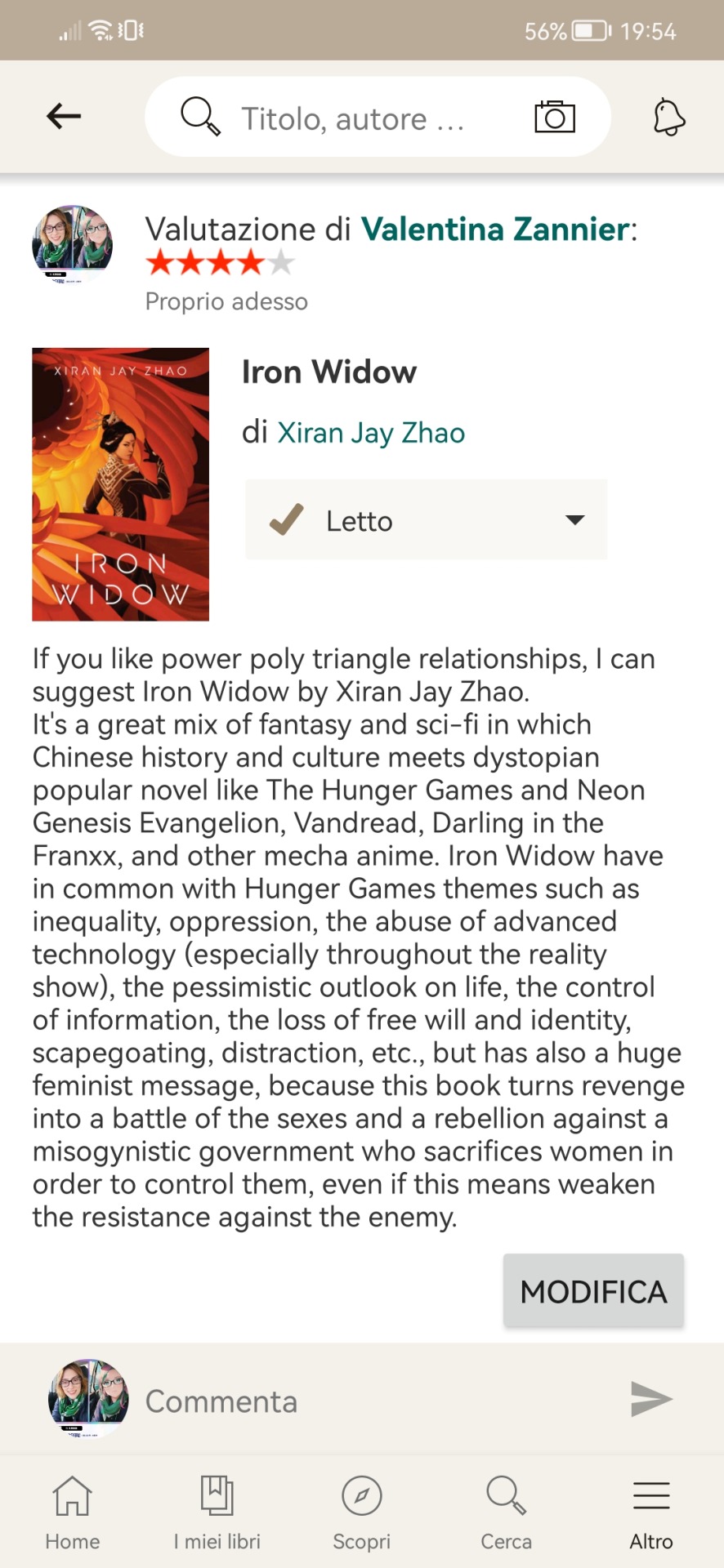
My GoodReads: [X]
My review: [X]
#vavuskapakage#Vavuskabooks#iron widow#xiran jay zhao#young adult fantasy#young adult fiction#sci fi novels#sci fi fantasy#book reviews#book shelves#book shelf#book summaries#goodreads reviews#goodreads challenge#goodreads#lgbtq+ representation#lgbtq representation#lgbtq fiction#lgbtq fantasy#polyamarous
3 notes
·
View notes
Text
Young dragons go against a prophecy and try to find their families while overthrowing monarchies. There is also some who can use magic, but that apparently eats away their soul.
This series is found in the preteen/teen book section.
Write your answer and guess in the comments section!
#book summaries#book recommendations#dragons#monarch#war#dunno why this is in the children’s section at Barnes and Nobles#surprisingly lots of violence#is a series with multiple arcs and over 10 books#take a guess#one of my favorite book series#royalty
2 notes
·
View notes
Text
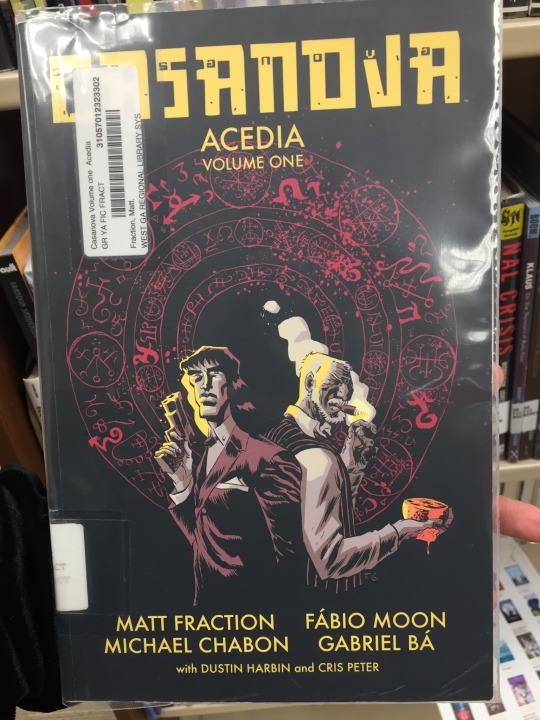

So there’s this comic/graphic novel I came across at the public library in the state of Georgia in Douglasville.
It’s titled:
~ CASANOVA ACEDIA ~
To sum it up it’s about this man named CASANOVA QUINN who has no memory of his past. As he’s walking out of a fire somewhere in the mountains in California in result, he starts over with nothing except a blank slate & a new identity as Quentin Cassaday. He starts working for this man named Mr. Amiel Boutique anything Mr. Boutique needs Quentin Cassaday gets it done. One night while Quentin is supervising a party on behalf of Mr. Boutique he encounters this woman at the party & shortly after the party is over she seduces Quentin Cassaday & attacks & attempts to kill him. Mr. Boutique finds them both in the swimming pool during & has his security pull him out & later Boutique reveals he also has no memory of his past & that’s where the story starts to unravel more.
I also wanted to to mention that I randomly found this book & read it but I believe when I researched this book there were other parts so I may have read it & maybe it was out of order but it’s the only one of them that I read.
3 notes
·
View notes
Text
Summary: Chapter 4 of Critical Intersex
For many of us, Chapter 4 of Critical Intersex (2009) turned out to be a particularly rich source of information about intersex history. So I (Elizabeth) have decided to give a fairly detailed summary of the chapter because I think it’s important to get that info out there. I’m gonna give a little bit of commentary as I go, and then a summary of our book club discussion of the chapter.
The chapter is titled “(Un)Queering identity: the biosocial production of intersex/DSD” by Alyson K. Spurgas. It is a history of ISNA, the Intersex Society of North America, and how it went from being a force for intersex liberation to selling out the movement in favour of medicalization. (See here for summary of the other chapters we read of the book!)
Our high level reactions:
Elizabeth (@ipso-faculty): Until I read chapter 4, I didn't really realise how reactionary “DSD” was. It hadn't been clear to me how much it was a response to the beginning of an organized intersex advocacy movement in the United States.
Michelle (@scifimagpie): I could feel the fury in the writer's tone. It was a real barn burner.
Also Michelle: the fuckin' respectability politics of DSD really got under my skin, as a term! I know the importance, as a queer person, of not forcing people to ID as queer, but this was a lot.
Introducing the chapter
The introduction sets the tone by talking about how in the Victorian era there was a historical shift from intersex being a religious/juridical issue to a pathology, and how this was intensified in the 1950s with John Money’s invention of the optimal gender rearing model.
Spurgas briefly discusses how the OGR model is harmful to intersex people, and how it iatrogenically produces sexual dysfunction and gender dysphoria. “Iatrogenic” means caused by medicine; iatrogenesis is the production of disease or other side-effects as a result of medical intervention.
This sets scene for why in the early 1990s, Cheryl Chase and other intersex activists founded the Intersex Society of North America (ISNA). It had started as a support group, and morphed significantly over its lifetime. ISNA closed up shop in 2008.
Initially, ISNA was what we’d now call interliberationist. They were anti-pathologization. Their stance was that intersexuality is not itself pathological and the wellbeing of intersex people is endangered by medical intervention. They organized around the abolition of surgical intervention. They also created fora like Hermaphrodites With Attitude for the deconstruction of bodies/sexes/genders and development of an intersex identity that was inherently queer.
The early ISNA activists explicitly aligned intersexuality in solidarity with LGB and transgender organizing. There was a belief that similar to LGBT organizing, once intersex people got enough visibility and consciousness-raising, people would “come out” in greater numbers (p100).
By the end of the 90s, however, many intersex people were actively rejecting being seen as queer and as political subjects/actors. The organization had become instead aligned with surgeons and clinicians, had replaced “intersex” with “DSD” in their language.
By the time ISNA disbanded in 2008 they had leaned in hard on a so-called “pragmatic” / “harm reduction” model / “children’s rights perspective”. The view was that since infants in Western countries are “born medical subjects as it is” (p100)
Where did DSD come from?
In 2005, the term “disorders of sexual differentiation” had been recently coined in an article by Alice Dreger, Cheryl Chase, “and three other clinicians associated with the ISNA… [so as] to ‘label the condition rather than the person’” (p101). Dreger et al thought that intersex was “not medically accurate” (p101) and that the goal should be effective nomenclature to “sort patients into diagnostically meaningful groups” (p101).
Dreger et al argued that the term intersex “attracts the interest of a large number of people whose interest is based on a sexual fetish and people who suffer from delusions about their own medical histories” (Dreger et al quoted on p101)
Per Spurgas, Dreger et al had an explicit agenda of “distancing intersex activism from queer and transgressive sex/gender politics and instead in supporting Western medical productions of intersexuality” (p102). In other words: they were intermedicalists.
According to Dreger et al, an alignment with medicine is strategically important because intersex people often require medical attention, and hence need to be legible to clinicians. “For those in favor of the transition to DSD, intersex is first and foremost a disorder requiring medical treatment” (p102)
Later in 2005 there was a “Intersex Consensus Meeting” organized by a society of paediatricians and endocrinologists. Fifty “experts” were assembled from ten countries (p101)... with a grand total of two actually intersex people in attendance (Cheryl Chase and Barbara Thomas, from XY-Frauen).
At the meeting, they agreed to adopt the term DSD along with a “‘patient-centred’ and ‘evidence-based’ treatment protocol” to replace the OGR treatment model (p101)
In 2006, a consortium of American clinicians and bioethicists was formed and created clinical guidelines for treating DSDs. They defined DSD quite narrowly: if your gonads or genitals don’t match your gender, or you have a sex chromosome anomaly. So no hormonal variations like hyperandrogenism allowed.
The pro-DSD movement: it was mostly doctors
Spurgas quotes the consortium: “note that the term ‘intersex’ is avoided here because of its imprecision” (p102) - our highlight. There’s a lot of doctors hating on intersex for being a category of political organizing that gets encoded as the category is “imprecise” 👀
Spurgas gets into how the doctors dressed up their re-pathologization of intersex as “patient centred” (p103) - remember this is being led by doctors, not patients, and any intersex inclusion was tokenistic. (Elizabeth: it was amazing how much bs this was.)
As Spurgas puts it, the pro-DSD movement “represents an abandonment of the desire for a pan-intersexual/queer identity and an embrace of the complete medicalization of intersex… the intersex individual is now to be understood fundamentally as a patient” (p103)
Around the same time some paediatricians almost came close to publicly advocating against infant genital mutilation by denouoncing some infant surgeries. Spurgas notes they recommended “that intersex individuals be subjected (or self-subject) to extensive psychological/psychiatric, hormonal, steroidal and other medical” interventions for the rest of their lives (p103).
This call to instead focus on non-surgical medical interventions then got amplified by other clinicians and intermedicalist intersex advocacy organizations.
The push for non-surgical pathologization hence wound up as a sort of “compromise” path - it satisfied the intermedicalists and anti-queer intersex activists, and had the allure of collaborating with doctors to end infant surgeries. (Note: It is 2024 and infant surgeries are still a thing 😡.)
The pro-DSD camp within the intersex community
Spurgas then goes on to get into the discursive politics of DSD. There’s some definite transphobia in the push for “people with DSDs are simply men and women who happen to have congenital birth conditions” (p104). (Summarizer’s note: this language is still employed by anti-trans activists.)
The pro-DSD camp claimed that it was “a logical step in the ‘evolution in thinking’” 💩 and that it would be a more “humane” treatment model (p105) 💩
Also that “parents and doctors are not going to want to give a child a label with a politicized meaning” (p104) which really gives the game away doesn’t it? Intersex people have started raising consciousness, demanding their rights, and asserting they are not broken, so now the poor doctors can’t use the label as a diagnosis. 🤮
Spurgas quotes Emi Koyama, an intermedicalist who emphasized how “most intersex people identify as ‘perfectly ordinary, heterosexual, non-trans men and women’” (p104) along with a whole bunch of other quotes that are obviously queerphobic. Note from Elizabeth: I’m not gonna repeat it all because it’s gross. In my kindest reading of this section, it reads like gender dysphoria for being mistaken as genderqueer, but instead of that being a source of solidarity with genderqueers it is used as a form of dual closure (when a minority group goes out of its way to oppress a more marginalized group in order to try and get acceptance with the majority group).
Koyama and Dreger were explicitly anti-trans, and viewed intergender type stuff as “a ‘trans co-optation’ of intersex identity” (p105) 🤮
Most intersex people resisted “DSD” from its creation
On page 106, Spurgas shifts to talking about how a lot intersex people were resistant to the DSD shift. Organization Intersex International (OII) and Bodies Like Ours (BLO) were highly critical of the shift! 💛 BLO in particular noted that 80-90% of their website users were against the DSD term. Note from Elizabeth: indeed, every survey I’ve seen on the subject has been overwhelmingly against DSD - a 2015 IHRA survey found only 3% of intersex Australians favoured the DSD term.
Proponents of “intersex” over “DSD” testified to it being depathologizing. They called out the medicalization as such: that it serves to reinforce that “intersex people don’t exist” (David Cameron, p107), that it is damaging to be “told they have a disorder” (Esther Leidolf, p107), that there is “a purposeful conflation of treatment for ‘health reasons’ and ‘cosmetic reasons’ (Curtis Hinkle, p107), and that it’s being pushed mainly by perisex people as a reactionary, assimilationist endeavour (ibid).
Interliberationism never went away - intersex people kept pushing for 🌈 queer solidarity 🌈 and depathologization - even though ISNA, the largest intersex advocacy organization, had abandoned this position.
Spurgas describes how a lot of criticism of DSD came from non-Anglophone intersex groups, that the term is even worse in a lot of languages - it connotes “disturbed” in German and has an ambiguity with pedophilia and fetishism in French (p111).
The DSD push was basically entirely USA-based, with little international consultation (p111). Spurgas briefly addresses the imperialism inherent in the “DSD” term on pages 118/119.
Other noteworthy positions in the DSD debate
Spurgas gives a well-deserved shout out to the doctors who opposed the push to DSD, who mostly came from psychiatry and opposed it on the grounds that the pathologization would be psychologically damaging and that intersex patients “have taken comfort (and in many cases, pride) in their (pan-)intersex identity” (p108) 🌈 - Elizabeth: yay, psychiatrists doing their job!
Interestingly, both sides of the DSD issue apparently have invoked disability studies/rights for their side: Koyama claimed DSD would herald the beginning of a disability rights based era of intersex activism (p109) while anti-DSDers noted the importance in disability rights in moving away from pathologization (p109).
Those who didn’t like DSD but who saw a strategic purpose for it argued it would “preser[ve] the psychic comfort of parents”, that there is basically a necessity to coddle the parents of intersex children in order to protect the children from their parents. (p110)
Some proposed less pathologizing alternatives like “variations of sex development” and “divergence of sex development” (p110)
The DSD treatment model and the intersex treadmill
Remember all intersex groups were united that sex assignment surgery on infants needs to be abolished. The DSD framework that was sold as a shift away from surgical intervention, but it never actually eradicated it as an option (p112). Indeed, it keeps ambiguous the difference between medically necessary surgical intervention and culturally desired cosmetic surgery (p112). (Note from Elizabeth: funny how *this* ambiguity is acceptable to doctors.)
What DSD really changed was a shift from “fixing” the child with surgery to instead providing “lifelong ‘management’ to continue passing” (p112), resulting in more medical intervention, such as through hormonal and behavioural therapies to “[keep] it in remission” (p113).
Cheryl Chase coined the “intersex treadmill’: the never-ending drive to fit within a normative sex category (p113), which Spurgas deploys to talk about the proliferation of “lifelong treatments” and how it creates the need for constant surveillance of intersex bodies (p114). Medical specialization adds to the proliferation, as one needs increasingly more specialists who have increasingly narrow specialties.
There’s a cruel irony in how the DSD model pushes for lifelong psychiatric and psychological care of intersex patients so as to attend to the PTSD that is caused by medical intervention. (p115) It pushes a capitalistic model where as much money can be milked as possible out of intersex patients (p116).
The DSD treatment model, if it encourages patients to find community at all, hence pushes condition-specific medical support groups rather than pan-intersex advocacy groups (p115)
Other stuff in the chapter
Spurgas does more Foucault-ing at the end of the chapter. Highlight: “The intersex/DSD body is a site of biosocial contestation over which ways of knowing not only truth of sex, but the truth of the self, are fought. Both intelligibility and tangible resources are the prizes accorded to the winner(s) of the battle over truth of sex” (p117)
There’s some stuff on the patient-as-consumer that didn’t really land with anybody at the book club meeting - we’re mostly Canadians and the idea of patient-as-consumer isn’t relatable. Ei noted it isn’t even that relatable from their position as an American.
***
Having now summarized the chapter, here's a summary of our discussion at book club...
Opening reactions
Michelle (M): the way the main lady involved became medicalized really made my heart sink, reading that.
Elizabeth (E): I do remember some discussion of intersex people in the 90s, and it never really grew in the way that other queer identities did! This has kind of helped for me to understand what the fuck happened here.
E: It was definitely a very insightful reading on that part, while being absolutely outraging. I didn't know, but I guess I wasn't surprised at how pivotal US-centrism was. The author was talking about "North American centric" though but always meant the United States!!! Canada was just not part of this! They even make mention of Quebec as separate and one of the opposing regions. I was like, What are you doing here, America? You are not the entirety of our continent!!!
E: The feedback from non-Anglophone intersex advocates that DSD does not translate was something that I was like, "Yes!" For me, when I read the French term - that sounded like something that would include vaginismus, erectile dysfunction - it sounds far more general and negative.
M: the fuckin' respectability politics of DSD really got under my skin, as a term! I know the importance, as a queer person, of not forcing people to ID as queer, but this was a lot.
E: it was very assimilationist in a way that was very upsetting. I knew intellectually that this was going on. There was such a distinct advocacy push for that. The coddling of parents and doctors at the expense of intersex people was such a theme of this chapter, in a way that was very upsetting. They started out with this goal of intersex liberation, and instead, wound up coddling parents and doctors.
Solidarities
M: I feel like there's a real ableist parallel to the autism movement here… It dovetails with how the autism movement was like, "Aww, we're sorry about your emotionless monster baby! This must be so hard for you [parents]!" And it felt like "aw, it's okay, we'll fix your baby so they can interface with heterosexuality!" [Note: both of us are neurodivergent]
E: A lot of intersexism is a fear that you're going to have a queer child, both in terms of orientation and gender.
E: You cannot have intersex liberation without putting an end to homophobia and transphobia.
M: We're such natural allies there!
E: I understand that there are these very dysphoric ipsogender or cisgender people, who don't want to be mistaken as trans, but like it or not, their rights are linked to trans people! When I encounter these people, I don't know how to convey, "whether you like it or not, you're not going to get more rights by doing everything you can to be as distant as possible."
M: it reminds me of the movements by some younger queers to adhere to respectability politics.
E: Oh no. There are younger queers who want respectability politics????
M: well, some younger queers are very reactionary about neopronouns and kink at pride. they don't always know the difference between representation and "imposing" kinks on others. In a way, it reminds me of the more intentional rejection of queer weirdos, or queerdos, if you will, by republican gays.
E: I feel like a lot of anti-queerdom that comes out of the ipso and cisgender intersex community reads as very dysphoric to me. That needs to be acknowledged as gender dysphoria.
M: That resonates to me. When I heard about my own androgen imbalance, I was like, "does that mean I'm not a real woman?" And now I would happily say "fuck that question," but we do need an empathy and sensitivity for that experience. Though not tolerance for people who invalidate others, to be honest.
E: The term "iatrogensis" was new to me. The term refers to a disease caused or aggravated by medical intervention.
M: So like a surgical complication, or gender dysphoria caused by improper medical counselling!
The DSD debate
ei: i think the "disorder" discussion is really interesting. in my opinion, if someone feels their intersex condition is a disorder they have every right to label it that way, but if someone does not feel the same they have every right to reject the disorder label. personally i use the label "condition". i don't agree with forcing labels on anyone or stripping them away from anyone either.
M: for me, it felt like a cautionary tale about which labels to accept.
ei: i'm all around very tired of people label policing others and making blanket statements such as "all people who are this have to use this label”... i also use variation sometimes, i tend to go back and forth between variation and condition. I think it's a delicate balance between being sensitive to people's label preferences vs making space for other definitions/communities.
We then spoke about language for a bunch of communities (Black people, non-binary people) for a while
E: one thing that was very harrowing for me about this chapter is that while there was this push to end coercive infant surgery, they basically ceded all of the ground on "interventions" happening from puberty onward. And as someone who has had to fight off coercive medical interventions in puberty, I have a lot of trauma about violent enforcement of femininity and the medical establishment.
ei: i completely agree that it's psychologically harmful tbh…. i was assigned male at birth and my doctors want me to start testosterone to make me more like a perisex male. which is extremely counterproductive because i'm literally transfem and have expressed this many times
Doctors Doing Harm
M: for me, the validation of how doctors can be harmful in this chapter meant a lot.
E: something that surprised me and made me happy was that there were some psychiatrists who spoke out against the DSD label. As someone who routinely hears a lot of anti-psychiatry stuff - because there's a lot of good reason to be skeptical of psychiatry, as a discipline - it was just nice to see some psychiatrists on the right side of things, doing right by their patients. Psychiatrists were making the argument that DSD would be psychologically harmful to a lot of intersex people.
ei: like. being told that something so inherently you, so inherently linked to your identity and sense of self, is a disorder of sexual development, something to be fixed and corrected. that has to be so harmful
ei: like i won't lie i do have a lot of severe trauma surrounding the way i've been treated due to being intersex. but so much of my negative experiences are repetitive smaller things. Like the way people treat me like my only purpose is to teach them about intersex people …. either that or they get really creepy and gross. I’m lucky in that i'm not visibly intersex, so i do have the privilege of choosing who knows. but there's a reason why i usually don't tell people irl.
M: intersex and autism have overlap again about how like, minor presentation can be? As opposed to the sort of monstrous presentation [Carnival barker impression] "Come see the sensational half-man, half-woman! Behold the h-------dite!" And like - the way nonverbal people are also treated feels relevant to that, because that's how autism is often treated, like a freakshow and a pity party for the parents? And it's so dehumanizing. And as someone who might potentially have a nonverbal child, because my wife is expecting and my husband and she both have ADHD - I'm just very fed up with ableism and the perception of monstrosity.
Overall, this was a chapter that had a lot to talk about! See here for our discussion of Chapters 5-7 from the same volume.
#intersex#intersex studies#queer theory#gender studies#actually intersex#intersex rights#intersex activism#intersex books#book reviews#book summaries#paper summaries#lit review#critical intersex#intersex history
52 notes
·
View notes
Text

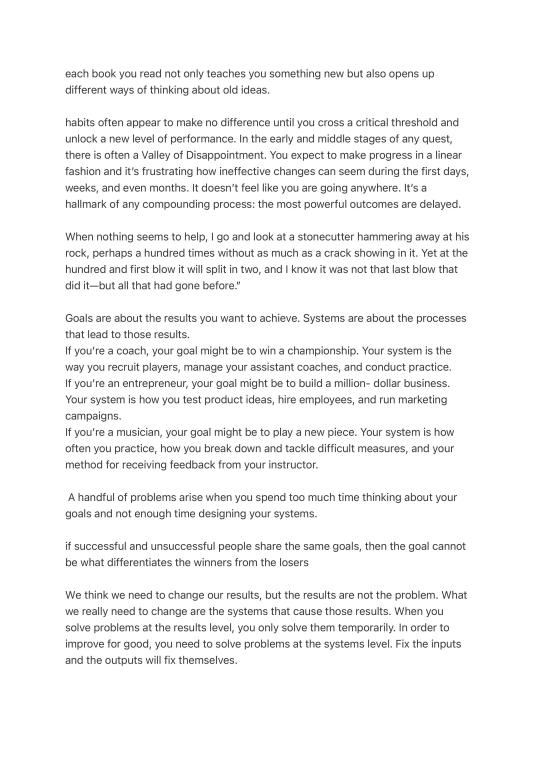
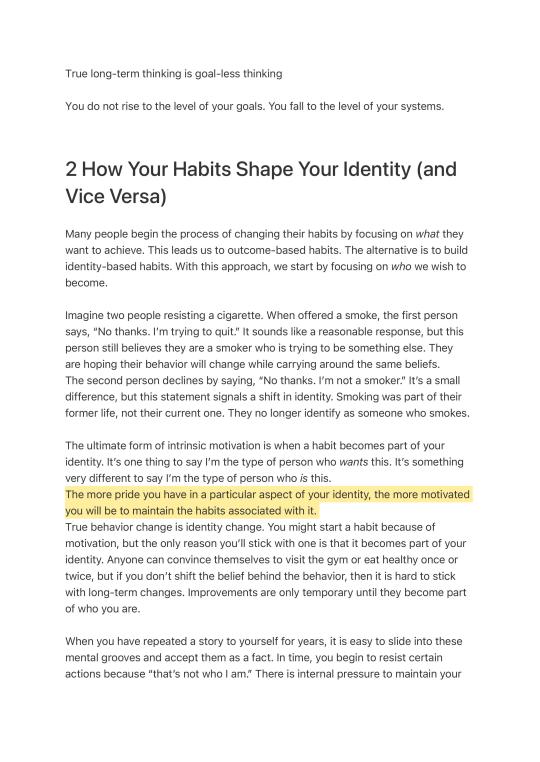

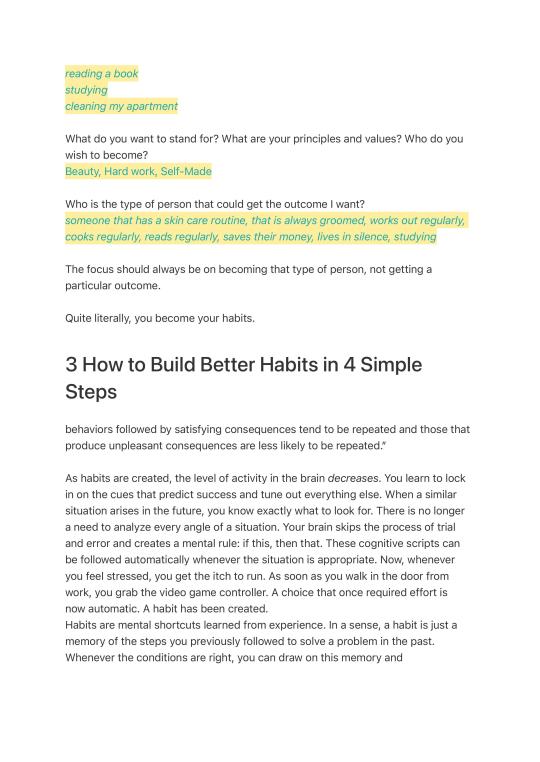
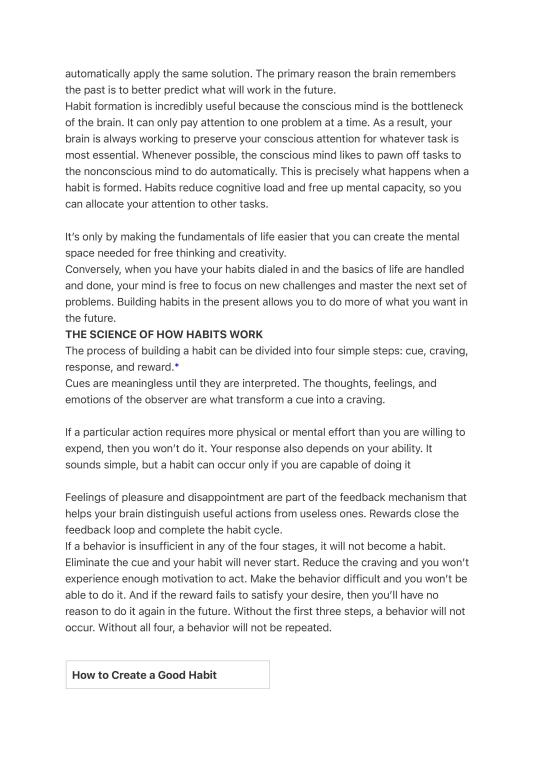




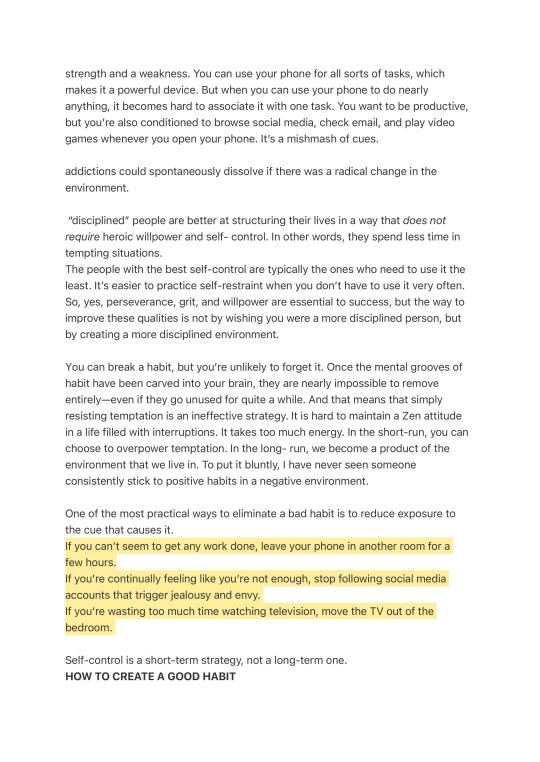
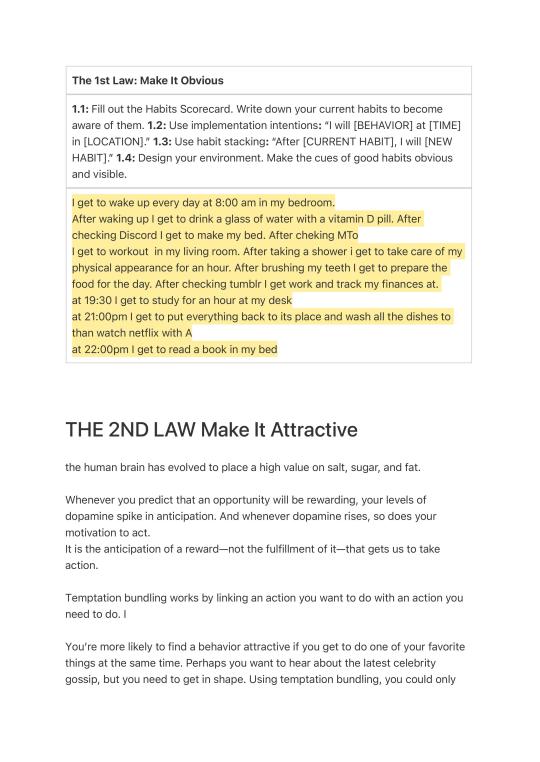










#high maintenance#black luxury#glow up#that girl#self improvement#higherself#black women appreciation#levelup#summaries#summary#book summary#book summaries#james clear#atomic habits#beautiful words#excerpts#emotions#quotes#luxury aesthetic#love poems
18 notes
·
View notes
Text
Noam Chomsky, Profit Over People
One-sentence summary: Neoliberalism, or the free market economy, is really just a cover story for a system that allows the rich to plunder the poor.
This is it. This is THE book to read to understand how exactly the rich and elite have successfully conned the world into believing that free markets are the magical solution to all the world’s problems. That’s a lie. Free markets don’t work. Or, rather: they do, but not in the way you they want you to think.
Free markets don’t work as a tool for economic development. Free markets don’t raise standards of living.
Countries that are prosperous today - such as the United States, Britain, and Japan - have all relied on (and still rely on) significant government intervention, in the form of subsidies and protectionist policies, for economic growth.
In other words: Rich countries didn’t get rich by subscribing to neoliberalism. They got rich by breaking the rules of neoliberalism.
So why do these countries try to impose free markets on the rest of the world?
Because free markets work very, very well to protect Western business interests. Free markets allow the rich to plunder the poor, and keeps the current global economic order locked in place. On a level playing field, those who are already strong will always win, while the rest will always lose.
Under the current economic order, developing countries have one of two roles to play:
Provide cheap labor to Western businesses for corporate profit
Provide a market for highly protected Western businesses to sell their goods
The first beneficiaries of these countries’ resources are to be Western investors, not the actual people of those countries.
To make sure that developing countries play their designated service roles, the West (and the United States in particular) has a wide arsenal of tools at their disposal:
Free Trade Agreements
Imposed through institutions such as the WTO and NAFTA, free trade agreements are the softer, more “diplomatic” (but still coercive) approach to getting a country to open its borders to foreign investment.
Economic warfare
Sanctions and trade embargoes on countries that refuse to play their role. See: Cuba.
The CIA
Orchestration of military coups and other anti-democracy efforts to ensure that the “favorable” government (i.e. supports big businesses and foreign investment) takes / stays in power. See: almost any country in Latin America, Italy.
The Military-Industrial Complex
Domestically, this is how the United States government funnels billions of dollars into corporate subsidies (while avoiding the democratizing effects of social spending) so that they can continue to stay ahead of the rest of the world.
The Propaganda Machine
A Cold War relic. Why is anti-Communist fear still a thing today, when the USSR collapsed over 30 years ago? Because it’s a very useful way for the United States to justify all of the above.
With these tools, the neoliberal regime sets out to crush things that could actually help build wealth in the hands of the people, such as democracy, labor unions, populist movements, distributive policies, and social welfare. And unfortunately they’ve been pretty successful.
#noam chomsky#profit over people#anti capitalism#post capitalism#fuck neoliberals#free market economy#neoliberalism#book summaries
6 notes
·
View notes
Text
Les Misérables 170/365 -Victor Hugo
161
His house has since been demolished and rebuilt, married twice and a connoisseur of paintings.
162
He abandoned in memories of his past and regarded the names in power as vulgar and bourgeois his Godfather bestowed on him the name Luc-Esprit.
163
He was crowned by the Duc de Nivernais and the deaths of Louis XVI Napoleon or the return of the Bourbons defaced that memory. And he always narrated how he saved himself from the Terror of 1789. (that’s the one where Madame Guillotine was popular)
164
He had theories to let the wife control the funds, but it nearly left him destitute. Still, he had a house and servants and called all the women Nicolette. (is that like calling all the maids Maria)
165
His sorrow converted into wrath, all sorts of prejudices and liberties in his royal renown. He paid for the maintenance of two boys who he claimed not to be his. He complained of being cheated by a businessman of inheritance, the country has degenerated he claimed. (ok boomer) His second wife had a daughter who married a colonel at Waterloo and died at thirty. He also took a lot of snuff and believed little in God.
166
This was M. Luc-Esprit Gillenormand, in spite of it all, he was venerable and by 1814 he had immured in his habits of antiquated elegance.
167
The two daughters, ten years apart, were little like sisters, the younger had a charming soul, the older a chimera. Mademoiselle Gillenormand was a prude though allowed her grandnephew to embrace her, her friend Mademoiselle Vaubois was a blockhead. Mademoiselle Gillenormand grew lost as she grew old, melancholy, with unknown sadness, the other in the house was a little child, his grandson.
BOOK THIRD THE GRANDFATHER AND THE GRANDSON
168
In Rue Servandoni Gillenormand frequented solons and it cost his self-respect nothing. Madame de T had frequent friends in her Royalist solon amusing themselves on events and songs. Gillenormand was one of two men there the other de Lamothe-Valois. In the bourgeoisie honored situations decay, in 1815 Lamothe was held in consideration of the celebrity of his name. Gillenormand’s consideration was first rate and always accompanying him was his spinster daughter and grandson, son of the brigand of the Loire.
169
If someone chanced through the town of Vernor, they may have seen a man about fifty walking along the bank of the Sienne. He lived alone in a small house, cultivated his flower garden, the brigand of the Loire. Anyone who read military memoires would find frequency of the name Pontmercy and the long service record. At Waterloo he was the chief of a squadron of cuirassiers and received a sword across the face and fell into the ruin of Ohain. Georges Pontmercy was the brigand of Loire.
After being pulled out of the ravine he rejoined the army, transferred from ambulance to ambulance. Sent him to residence and surveillance at Vernan with half pay and between two wars married the younger Gillenormand who died leaving a child who was forced on threat of disinheritance to give him to his grandfather. (you might be wondering why the same man who would take a son from his father because he didn’t agree with his politics would support two kids who definitely aren’t his well people are complicated) The boy, Marius, knew he had a father but nothing else, but listening to gossip grew shame about him. Pontmercy could only catch gazes of him, a sympathetic priest befriended him and learned his history. Twice a year Marius wrote dictated letters to his father and the responses his grandfather intercepted. (if you’re not getting it it’s like a right wing conservative grandfather took his grandson away from his left leaning liberal son in law)
170
All Marius knew of the world was the solon and he soon grew melancholy, and he beheld the old women like phantoms and sometimes the ancient priests mingled. “Moreover, as it is indispensable that the Revolution should be everywhere in this century, this feudal solon was, as we have said, dominated by a bourgeois. M. Gillenormand reigned there.”p.397 The essence of Paris on white society, reputations held in quarantine, traces of anarchy in renown. Today, solons no longer resemble those Royalists, they are now demagogues. Madame de T’s society was haughty refinements of the old regime, buried but alive, antiquated eccentric speech. Men and deeds judged, abated each other, an air of having lived a long time ago, a mummified society.
Madame de T’s was ultra, to go beyond a partisan of things to the point of being their enemy. The first phase of the Restoration, the first six years were extraordinary catastrophes, sinking in the past little new, little old. “Former days did not recognize Yesterday. People no longer had the feelings for what was grand,.”p.398 This Society no longer exists nothing of it does today, engulfed in a deluge beneath two Revolutions. “What billows are ideas! How quickly they cover all that is their mission to destroy and to bury, and how promptly they create frightful gulfs!”p.398
These solons had their own literature and politics but didn’t keep their purity, in 1818 to be a Royalist was to excuse themselves and ultras were proud. They should have succeeded; their mistake was to create ages of youth and oppose conservative liberalism which demolishes. Why not accept the whole of history and the whole of France, those doctrines criticized the protected Royalism, which displeased it. Marius studied as children do, expanding to a vulgar pedant went to law school with not much love for his grandfather.
(you might have noticed by now I’ve been leaving out details Victor bloats his book with so much superfluous backstory and infodumps I really don’t know what’s important)
NEXT
2 notes
·
View notes
Text

"Steal like an artist" is a self-help book for creatives, based on the premise that everything is a remix and that creative work is built on what has come before. The author claims that the best way to be creative is to embrace your influences, copy the work of those you admire, and make it your own.
The book is divided into ten chapters, each containing a piece of advice for creative people. The author emphasizes the importance of cultivating a creative practice, whether it's writing, drawing, or making music. He encourages readers to create a daily routine and to prioritize the act of creating over the desire for perfection.
He also advises readers to share their work with others, even if it is not perfect, and to adopt the idea of "good theft" - taking inspiration from other creatives and making something new out of it. He argues that everything is a remix and that creativity is about making new connections between existing ideas.
Overall, this is a quick and easy read that offers practical advice for anyone looking to unlock their creative potential. It motivates readers to be bold, to take risks, and to trust in their instincts.
1 note
·
View note
Text
Favorite Books
Some Of My Favorite Books Could Fall Under Murder/Mystery, True Crime. I Included The Original Books Summary.

Past midnight, Chyna Shepard, twenty-six, gazes out a moonlit window, unable to sleep on her first night in the Napa Valley home of her best friend’s family. Instinct proves reliable. A murderous sociopath, Edgler Foreman Vess, has entered the house, intent on killing everyone inside. A self-proclaimed “homicidal adventurer,” Vess lives only to satisfy all appetites as they arise, to immerse himself in sensation, to live without fear, remorse, or limits, to live with intensity. Chyna is trapped in his deadly orbit.
Chyna is a survivor, toughened by a lifelong struggle for safety and self-respect. Now she will be tested as never before. At first her sole aim is to get out alive—until, by chance, she learns the identity of Vess’s next intended victim, a faraway innocent only she can save. Driven by a newly discovered thirst for meaning beyond mere self-preservation, Chyna musters every inner resource she has to save an endangered girl . . . as moment by moment, the terrifying threat of Edgler Foreman Vess intensifies.

When a professional military woman with a pristine reputation is found raped and murdered, a preliminary search turns up certain paraphernalia, and sex toys that point to a scandal of major proportions, The chief investigator is reluctant to take the case when he learns that his partner will be a woman with whom he had a tempestuous affair and an unpleasant parting. But duty calls and intrigue begins when they learn that several top-level people may have been involved with the "golden girl" - and many have wanted her dead.

A #1 New York Times Best Seller, Ann Rule’s The Stranger Beside Me gives us a unique perspective into the hidden world of Ted Bundy. Rule gives a chilling and intimate description of her time at a crisis hotline alongside her co-worker, the then charming, sensitive and trustworthy Ted Bundy, and the devastating realization that he was a brutal killer hiding in plain sight. After multiple arrests and an escape from jail, Bundy would later confess to the murders of at least thirty-six women and soon after was executed for three cases. Rule, a certified instructor for police training seminars, prosecutors and forensic science organizations, delves into how this savage killer -- a man she thought she knew -- could have fooled so many, including a professional like herself.
#Favorite Books#Dean Koontz Intensity#Nelson DeMille The General's Daughter#Ann Rule True Crime Author The Stranger Beside Me#Murder Mystery True Crime#Fan Fiction Script Writer#Book Summaries#Where I Have Gotten Some Ideas And Writing Inspiration From
2 notes
·
View notes
Text
If the book has to tell you that the story is compelling on the back, I don’t think it actually is.
1 note
·
View note